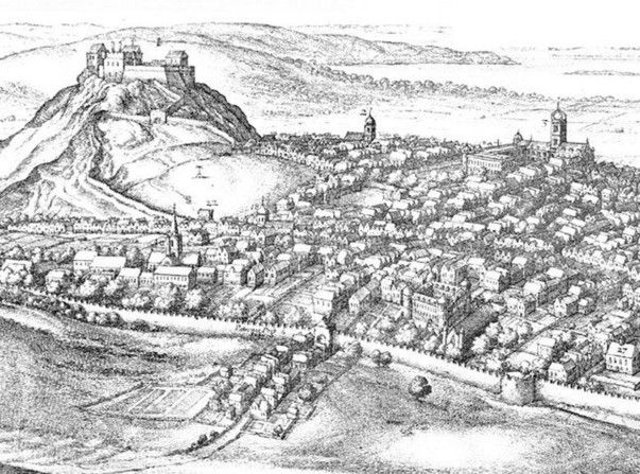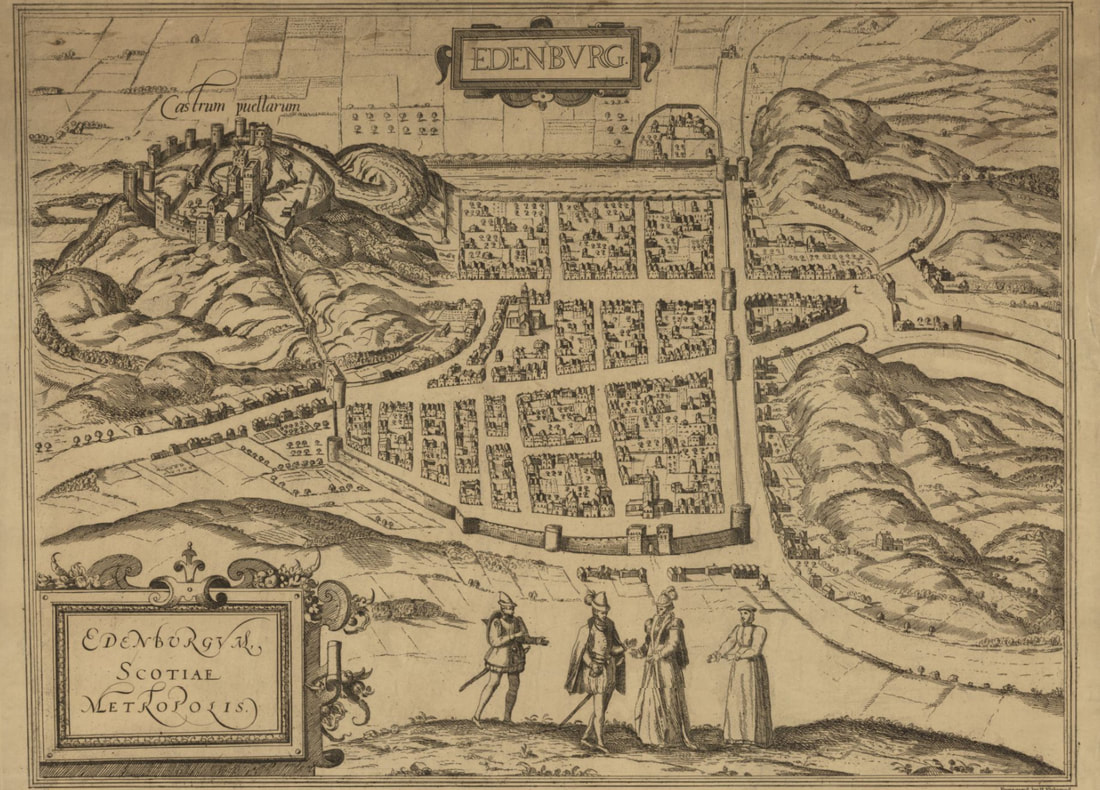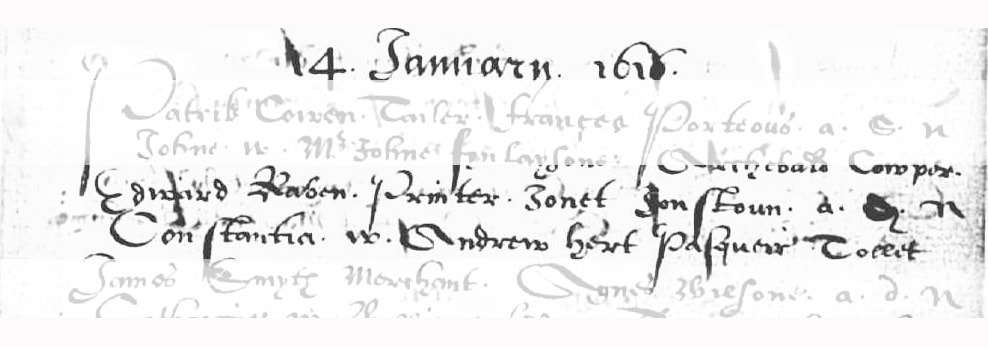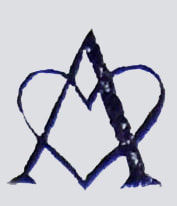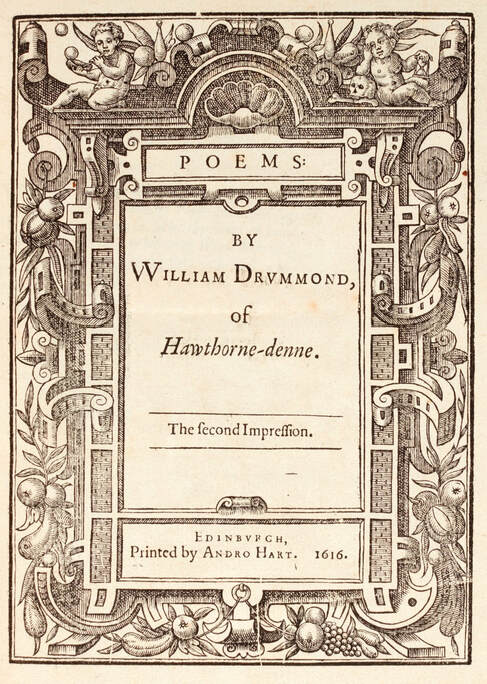|
The four hundredth anniversary of Edward Raban’s arrival in Aberdeen has coincided with some important aspects of his life being reassessed. Recent research undertaken by Professor Peter Reid and Professor Paul Mitchell using previously unexamined genealogical records has resulted in new information about Raban being uncovered. This research has shown that Raban arrived in Edinburgh earlier than has been previously realised, having settled there in late 1615 or early 1616. This changes our understanding of his activities in Scotland and his putative associations with the Pilgrim Press in Leiden.
|
It was widely known that Raban had a daughter, called Constantia, (baptised at St Nicholas Kirk, Aberdeen, 8th January 1624). It has now been established that two previous daughters, also named Constantia (or Constance), were born to Raban and his wife in Edinburgh in 1616 and 1618 respectively. These daughters died in infancy.
|
This baptismal entry in Edinburgh from 14 January 1616 reads: Edward Raben, Printer, Jonet Jonstoun a.d..n. [and daughter named] Constantia. W[itnesses] Andrew Hart, Pasquier Tollit. |
|
The entry above is not an indication of a fleeting visit to Edinburgh by Raban and his wife. In June 1617, he is still resident in Edinburgh when he is listed (right) as the witness at a baptism. “Henrie Stolence, pastment maker, Catharine d’Uplancas a.s.n. [and son named] Andrian. W[itnesses] Andrew Wyssman and Edward Raban”.
|
The first Constantia (born 1616) must have died in infancy. For, in May of 1618, a second daughter is baptised in Edinburgh:
|
Edward Rabane, Printer, Jonet Rabane, a.d.n. [and daughter named] Constance. W[itnesses] Andrew Hairt and Henry Stolence (whose son Raban had been witness for the year previously). |
|
Andro Hart was the leading printer and bookseller in Edinburgh in the first two decades of the seventeenth century. He had extensive connections to the Low Countries and had been importing books from there since the early 1600s. Hart appearing as witness to Raban’s child is, therefore, a very significant association. The other witness, Pasquier Tollet, was a Huguenot and had been in Edinburgh for over twenty years. He was married to Mary Kinmaker and had at least three children. Tollet was a marikin maker. Marikin (or Marroquin) is “Spanish leather made of goats’ skins, or goats’ leather not tanned but dressed with galls.” Tollet’s products would have been used in book-binding.
|
Why this matters
These documents are significant because they show that Raban was in Scotland from 1616. All previous work about Raban has suggested he fled Leiden in the aftermath of the printing of the Perth Assembly book and first came to Edinburgh only in 1620. These three documents, dated 1616, 1617 and 1618, show he was domiciled in Scotland earlier than was previously realised and demonstrate he was closely associated with Andro Hart one of the pre-eminently important Scottish printers and booksellers of this period. Hart’s strong connections with printing and bookselling in Holland and Germany and importing of books from the Continent to Edinburgh may offer a clue to Raban’s move to Scotland.
Raban, it appears, did return to Leiden in late 1618 or early 1619 and from whence he ‘returned’ to Scotland towards the end of 1619 or beginning of 1620. The evidence from these genealogical sources challenges the assumption that Raban was ‘working’ at the Pilgrim Press in Leiden throughout the years of its existence (1619-19) and his association with it may have been short-lived, during its final tumultuous months.
Raban, it appears, did return to Leiden in late 1618 or early 1619 and from whence he ‘returned’ to Scotland towards the end of 1619 or beginning of 1620. The evidence from these genealogical sources challenges the assumption that Raban was ‘working’ at the Pilgrim Press in Leiden throughout the years of its existence (1619-19) and his association with it may have been short-lived, during its final tumultuous months.

